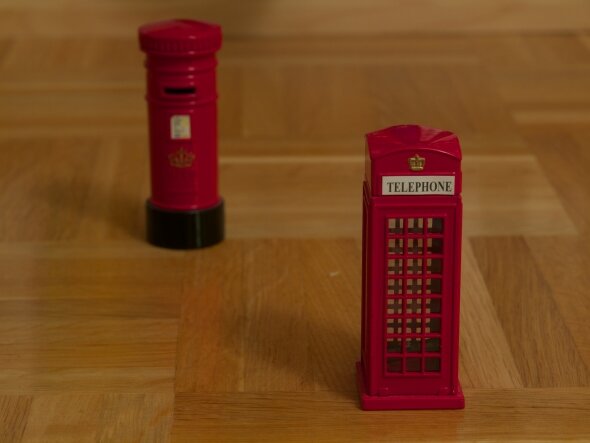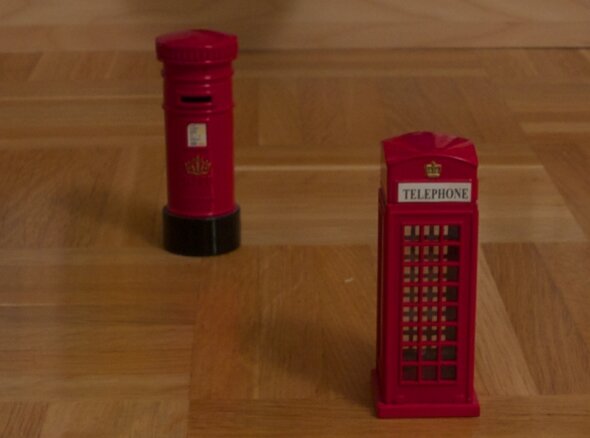
A lot of people wrongfully associate perspective with focal length and suggest that a change or different choice of focal length alters the perspective, “compresses” it or “distorts” it. This of course is rubbish as perspective is defined only by the distance of the lens to the subjects in the image. Often the term “lens perspective“ is used incorrectly which in itself is a manifestation of ignorance to what perspective is and how it is altered. Focal length only determines the angle of view and the magnification of the image. In other words, if you set up your camera at one location – or viewpoint – and shoot the same scene with different focal lengths, that scene will be rendered with an identical perspective for any focal length, no matter how short or long. Expanding on that thought, effects such as perspective distortion and perspective compression cannot be associated with specific focal lengths but are only the result of a specific viewpoint choice.
I’m going to demonstrate this with three simple images taken with the following test setup:
- an Olympus E-5 with Zuiko 12-60mm f2.8-4 mounted on small tripod
- two example objects placed about 15cm apart from each other
The first shot will be taken at 12mm focal length. As the E-5 works with a Four Thirds sensor, the angle of view of its Zuiko lens at 12mm equals an angle of view at 24mm in traditional 35mm terms (the crop factor of Four Thirds to traditional 35mm or “full frame” is 2). In other words our first shot will be a wide angle view of the scene with a horizontal angle of view of 73.7 degrees.
The second shot will be taken at 60mm focal length. In traditional 35mm terms, the angle of view will equal a 120mm focal length. In other words, the second shot will be a telephoto shot with a narrow 17.1 degrees of horizontal angle of view of the same scene.
The camera and lens will not change distance to the example objects in between those two shots. As both shots are taken from the same viewpoint, the perspective will be identical for both focal lengths. This means that any perceivable distortion or compression of the perspective will be present equally in both shots for both focal lengths. In other words: a 60mm telephoto focal length distorts the scene equally to a 12mm wide angle focal length and a 12mm wide angle focal length compresses the scene equally to a 60mm telephoto focal length – given both images were shot from the same viewpoint.
Looking at both images, I am going to crop the field of view that corresponds to the horizontal 17.1 degrees of the telephoto focal length from the 12mm focal length shot, so we can compare the common area of the scene covered by both angle of views and compare the perspective.
This is the first shot at 12mm focal length, without any crop applied.

Fixed Perspective Image at 12mm – uncropped
Format: Four Thirds
Focal Length: 12mm
As expected, 12mm focal length covers a lot of scenery albeit it’s needless to say that the floor of my living room is not particularly interesting, as we’re really interested in the two example objects and how focal length applies to the perception of dimension, size and distance – or in other words: compare the perspective at different focal lengths.
Now we need to take our second shot, this time at 60mm focal length.

Fixed Perspective Image at 60mm – uncropped
Format: Four Thirds
Focal Length: 60mm
It’s obvious of course, that the angle covered is extremely narrow and as I arranged the test setup initially, I made sure that we would get the most use of our frame at 60mm with the example objects filling as much of the frame as possible.
Now, those with super keen eyes and the ability not to get distracted by the surrounding scenery of my living room can maybe already see that the spatial relation of the two test objects is unaltered by our change of focal length and the perspective is identical. I’m not exactly Mr. Eagle Eyes myself, so let’s enlarge and crop the part of the 12mm image that corresponds to the 60mm field of view, so it’s easier to compare. As I am a fairly lazy person and not really a pixel perfect psychopath, the crop I did on the 12mm is not 100% identical to the 60mm frame by the pixel, but it’s close enough. Take a look.

Fixed Perspective Image at 12mm – cropped to 60mm angle of view
Format: Four Thirds
Focal Length: 12mm
Now it’s super obvious that in spite of a very big difference in focal length, the perspective of the 12mm shot is identical to the perspective of the 60mm shot. Both example objects in both shots appear to be at the same distance from each other and have not changed their appearance of size relation to each other. Also, their dimensions appear identical in both shots. Neither of the two focal lengths distorts or compresses the perspective in comparison to the other. The perspective is absolutely identical, as we only changed the focal length but not the viewpoint.
A change in focal length does not alter perspective.
A change in focal length by itself only changes the field of view and the magnification of the image.
In order to alter perspective, the distance of the lens to the subjects needs to be changed.
Also, we can see that the 12mm focal length “compresses” perspective to the same extend as the 60mm focal length for the same perspective and we have proven by example that perspective compression is not a feature of focal length but only depends on the distance of the lens to the subject(s). The same is true for perspective distortion which also depends only on the distance of the lens to the subject(s) and will be identical for all focal lengths at the same viewpoint. What, you don’t think that’s true? You think perspective distortion only applies to wide angle lenses at the edge of the field of view? Think again please. What happens if you move your wide angle lens very close into someone’s face centered in the frame to do a portrait? The facial features in the center of the frame appear very distorted. In other words, distortion affects the center of the frame. If that’s the case, it’s easy to see in above example shots that the example objects in the center of the frame of the 12mm frame look absolutely identical to the example objects at 60mm – no distortion at all – or rather: the same amount of distortion at all focal lengths for this specific perspective as defined by the distance of the lens to the example objects.
Perspective Compression is not a feature of long focal lengths but only the result of the distance of the lens to the subjects and their background.
Perspective Distortion is not a feature of short focal lengths but only the result of the distance of the lens to the subjects.
I hope this was helpful. Anybody still not getting the hang of this is welcome to try this out yourself using your own equipment, the results will be identical. Another helpful hint: the fact that changing the focal length only changes the magnification of the image can already be experienced easily when you zoom through the focal range of your zoom lens while looking through the viewfinder. Notice how the spatial relationship of all elements of the scene remains identical as you zoom in or out.
I also summed up the background on the underlying math in another blog post. Feel free to comment or leave remarks.
February 20th, 2014at 14:49(#)
Thanks for clarifying such a basic yet important aspect that many still don’t understand!
April 25th, 2015at 09:12(#)
Perfect explanation. Good work! THX!